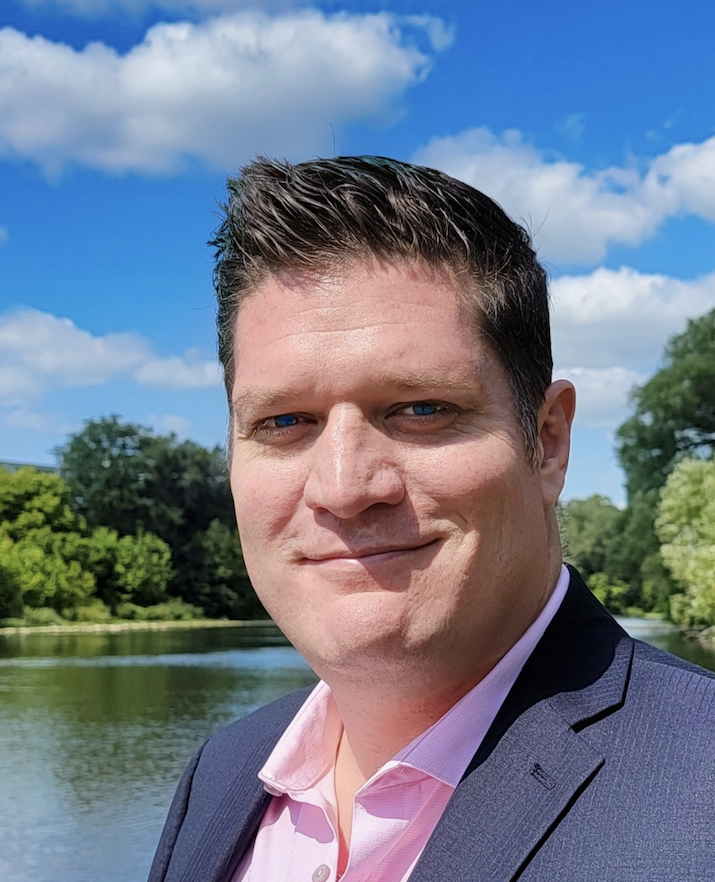Masking, Burnout, and the Neurodivergent High-Achieving Trap
"A Mask May Win Applause But The Nervous System Keeps The Score"
Every time we raise the bar, our nervous system pays the tab, sometimes with interest we don’t notice until the lights go out.

Masking, Burnout, and the High-Achieving Trap: Why Neurodivergent Success Can Hide an Inner Collapse
Burnout can look like depression, yet feel entirely different when you are neurodivergent. Day after day, we perfect our masking, camouflaging Autistic traits, tamping down ADHD impulses, and meeting every external goal—until the façade cracks. On the outside, we appear like textbook high achievers; inside, our bodies and minds register a slow-motion collapse. This paradox—autistic masking burnout, ADHD burnout symptoms, and broad neurodiversity burnout—demands a fresh lens and a compassionate approach to therapy. Drawing on Compassion-Focused Therapy (CFT) and bottom-up sensory regulation, this post explores why the threat-and-drive loop overheats, how to nurture the soothe system, and where to find spaces that welcome the real you.
The Mechanics of Masking and Burnout
“Camouflage costs energy twice: once to hide, and again to haul the weight of hiding.”
What Exactly Is Masking?
Masking (sometimes called camouflaging) is the deliberate or reflexive effort to blend in with neurotypical expectations. Examples include:
- Memorizing small-talk scripts to avoid awkward pauses.
- Suppressing stims, the need to move, rocking, hand-flapping, leg bouncing, despite mounting sensory tension.
- Tracking eye contact, volume, and prosody in real time like a backstage sound engineer.
Over months and years, this continuous self-editing recruits the body’s threat system: an ancient network built for emergency survival, not for eight-hour workdays or back-to-back Zoom calls.
To explore authenticity and everyday masking, you may like unmasking in everyday life.
Defining Burnout in Neurodivergent Terms
The World Health Organization calls burnout “chronic workplace stress that has not been successfully managed.” For neurodivergent adults, stress is often already unmanageable because the environment was designed for different nervous systems. High achiever burnout arises when relentless performance collides with sensory overload and social vigilance. Common signs:
|
Category |
Typical Sign |
ND-Specific Twist |
|
Energy
|
Physical exhaustion, headaches
|
Sensory shutdown: blurred vision after fluorescent exposure
|
|
Emotion
|
Cynicism, irritability
|
Alexithymia spike, numb until a sudden flood of tears
|
|
Cognition
|
Reduced efficiency, forgetfulness
|
“Brain fog,” word-finding issues during masking hangovers
|
Because these symptoms mirror depression, clinicians and clients can miss the core driver: chronic, compulsory masking.
The Burnout–Depression Overlap: Why the Labels Blur
“When depression whispers ‘Nothing matters,’ burnout shouts ‘Everything matters too much.’”
Both masking burnout and depression feature low mood, reduced pleasure, and social withdrawal. Yet their roots differ:
- Source of pain: Burnout stems from sustained effort without adequate recovery; depression often involves biochemical, genetic, or traumatic factors that persist even at rest.
- Response to rest: A week of sensory rest, nature walks, and authentic connection tends to ease burnout but may barely dent a major depressive episode.
- Narrative theme: Burnout’s mantra is “I can’t keep this up,” whereas depression whispers “Nothing matters.”\
If you improve after lowering demands, treating sensory input, and unmasking with safe people, you are likely dealing with neurodiversity burnout rather than primary depression, though the two can coexist.
For a deeper look at pressure and perfectionism, you may appreciate breaking free from expectations.
Personal Reflection: When Success Became a Silent Emergency
During my graduate program, I was leaned on by my school peers, I ran peer groups, and clinched a very high GPA. Professors praised my work and abilities, unaware of the costs to me internally, that I edited every email ten times to remove “hyper” punctuation and trimmed any tangent that hinted at ADHD enthusiasm. Every compliment tightened the vice: perform, exceed, never drop the mask.
One night, after leading a flawless day of workshops and providing in-person support in a hospital, I found myself in a very challenging physical state, taking the subway home, hands shaking, tears streaming when I walked in the door, safe at last. The signal wasn’t sadness; it was my nervous system screaming “Enough!” That moment forced a reckoning: I could continue as an avatar or learn to inhabit my real self, authentic self, with all my quirks and idiosyncrasies.
Why the Threat and Drive Systems Overheat
A Brain in Constant Performance Mode
Threat System
Function: Scan for danger (social mistakes, rejection, sensory triggers).
Outcome: Cortisol spikes, heart-rate variability drops, and sleep deteriorates.
Drive System
Function: Pursue goals, achievements, and dopamine hits.
Outcome: Hyper-focus, consecutive “wins,” but no genuine rest.
When both run hot without the buffering to soothe the system, burnout is inevitable.
Compassion-Focused Therapy’s Take
“Self-compassion is not self-indulgence; it is emergency maintenance for an over-clocked brain.”
CFT sees well-being as an equilibrium among threat, drive, and soothe. Neurodivergent adults often develop oversized threat and drive circuits, fine-tuned by years of misattunement and academic or workplace pressure. Strengthening the soothe system through warmth, affiliation, and self-compassion becomes not indulgence but essential maintenance.
Strategies to Reclaim Balance
1. Bottom-Up Sensory Regulation
- Proprioceptive “Heavy Work”: Resistance bands, exercise, wall push-ups, or weighted blankets ground the body and signal safety to the brainstem.
- Auditory Guardrails: Noise-cancelling headphones during commutes or open-plan office hours prevent surprising spikes in the threat system.
- Visual Dimming: Replace overhead fluorescents with soft lamp lighting, or dim the lights at home; use blue-light filters or glasses after sunset for computer work.
2. Compassion-Focused Exercises
- Affectionate Breathing: Inhale for four, hold two, exhale six while placing a warm palm over the heart. Visualize kindness entering on the breath.
- Compassionate Self-Dialogue: When the inner critic barks “Lazy!” respond with “I’m protecting my health; perseverance requires fuel.”
- Safe Image Imagery: Picture a place where your quirks, volume, or pacing are celebrated. Revisit daily to imprint safety.
3. Structural Adjustments at Work & Home
|
Context |
High Achiever Habit |
Balanced Alternative |
|
Email
|
Immediate responses 24/7
|
Scheduled “deep-work” blocks and delayed sends, be flexible with yourself.
|
|
Meetings
|
Camera-on perfection
|
Camera-optional policy; ask for the agenda to be shared in advance.
|
|
Home
|
Multitask until midnight
|
Dedicate time to the things that help you regulate, such as exercise, using fidget tools, and soft music in the evening to wind down.
|
4. Social Ecology and Safe Space
The antidote to perpetual masking is environments where authenticity is an asset, not a liability. Seek:
- Peer groups: Autism or ADHD communities online/by meetup, places to info-dump without a filter.
- Therapeutic alliances: Clinicians trained in neurodiversity-affirming care and compassion-focused therapy who model unconditional positive regard.
- Micro-alliances: One friend or partner who understands that pacing or silence equals comfort, not rejection. Developing authenticity.
FAQ On Autistic Burnout
Q1. Can reducing masking hurt my career?
Strategic masking, using specific skills briefly, can remain useful. The goal is to limit chronic masking, not authenticity. Many flourish when energy freed from vigilance fuels creativity and problem-solving.
Q2. What if bottom-up tools increase sensory overwhelm before they help?
Introduce one stimulus at a time. For example, try a 3-pound lap pad before committing to a 15-pound blanket. Track bodily cues until you find a “just right” threshold.
Q3. How long does it take to recover from neurodiversity burnout?
Variable. Short-term relief can appear within a week of reduced demands and increased sensory care. Full nervous-system recalibration often spans months, especially if chronic masking lasted years.
Q4. Do I need medication if burnout looks like depression?
Medication can help when burnout co-occurs with clinical depression or anxiety. Yet pills alone seldom solve the core issue: unsustainable environmental demands. Integrating lifestyle, sensory, and compassionate practices remains pivotal.
Trading Perfection for Presence
Masking burnout is not a moral failing; it is a biological inevitability when relentless performance meets limited recovery. The medicine is multi-layered: bottom-up sensory regulation, top-down self-compassion, and relational spaces that honour neurodivergent rhythms. External excellence no longer has to coexist with internal collapse.
Which tool will you test first? A weighted lap pad at your desk, a compassion-focused breathing routine before bed, or a conversation requesting camera-optional meetings? Experiment, observe, and adjust, because thriving is a prototype, not a final draft. You are allowed to have many iterations before finding what works best and at times, we need to adjust what has been working as the help our systems provide us can wane. “You of all people deserve your own love and affection.” Buddha
“Healing is less about fixing what is broken and more about letting what is true breathe in daylight.”
Ready to Explore Therapy to Help Find a Path to Sustainable Living?If these experiences mirror your own, you may welcome the reflection offered on my page for lived-experience autistic support.

Resources:
- Unmasking Autism – Devon Price
- The Compassionate Mind – Paul Gilbert
- Burnout: The Secret to Unlocking the Stress Cycle – Emily & Amelia Nagoski
- Neurodivergent Insights: What Causes Autistic Burnout
- WebMD Adult ADHD and Burnout
Peer & Crisis Support - Progress Place Warm Line: warmline.ca
- Canada Mental-Health Crisis: 988 (call/text)
- Krasman Centre Warm Line
Blog Disclaimer:
Personal Anecdotes and Confidentiality
You may encounter personal anecdotes within the content. These stories illustrate concepts and foster a sense of connection. Details have been changed to protect confidentiality, ensuring no identifying information is shared. I often use these personal anecdotes to convey ideas while safeguarding individuals' privacy. However, it’s important to remember that everyone’s journey is unique, and what works for one person may not work for another.
Disclaimer
Please note that the information shared here is for informational purposes only and is not a substitute for professional medical advice, diagnosis, or treatment. Always consult with a qualified healthcare provider regarding any medical concerns or conditions you may have.
Given the diversity of life experiences, not all messages may resonate with everyone. This blog is not a substitute for professional mental health care. For specialized guidance, consult a licensed professional.
Psychotherapy services are available to Ontario residents. Contact me for more information about my practice and to schedule a complimentary 20-minute consultation.
We hope you will find these resources beneficial as you pursue a more authentic and fulfilling life.

Michael Holker HBA, BSW, MSW
Michael Holker, MSW, RSW, is the compassionate heart behind Becoming Yourself Counselling. Discovering his own neurodivergence later in life shaped his existential, humanistic, and strengths-based approach to therapy. Guided by his lived experience, Michael helps neurodivergent individuals move beyond self-criticism toward self-understanding, self-compassion, and self-acceptance. His work invites clients to honour their journeys, embrace their resilience, and reconnect with their authentic selves, cultivating a life of greater alignment and meaning.


